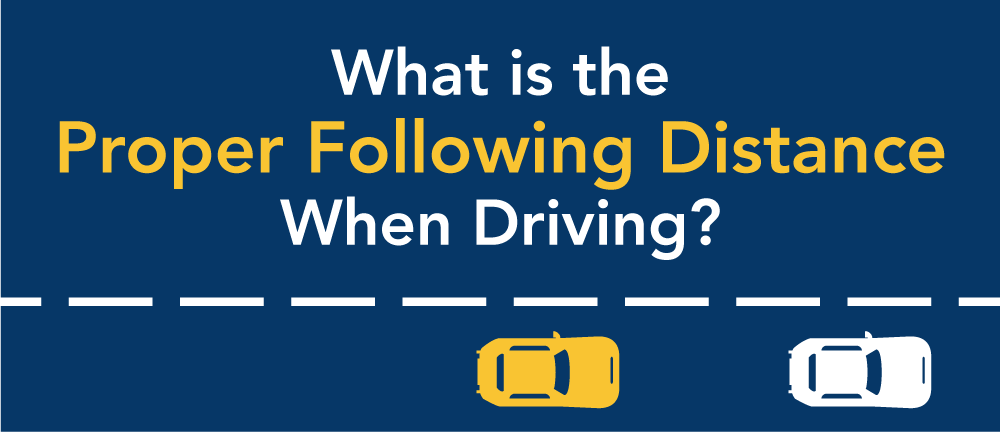By definition, proper following distance would be the distance you would have to be from the vehicle in front of you so that no matter what that vehicle does, i.e. slam on the brakes, you would not rear end that vehicle. Proper following distance is the distance between you and the car in front of you on the road. The necessary following distance can be affected by various aspects of the driving environment.
How Much Following Distance is Required and How is it Measured?
This distance should be at least 3-5 seconds and can be measured by selecting a stationary object on the roadway, like a tree or a lamp post. Once you select a stationary object begin counting—one-one thousand, two-one thousand, three one-thousand. When the rear of the vehicle in front of you passes that object, continue to count until the front of your vehicle reaches that same object.
Importance of Signaling
Signaling is how drivers communicate their intentions on the roadway to the vehicle and pedestrians by using lights or appropriate arm signals. It is Illinois law that drivers signal at least 100 ft prior to turns in city or residential areas and 200 ft prior to turns on an interstate or rural highway. It is critical that drivers signal before turns in order to give surrounding vehicles enough time to brake or reduce their speed. While signaling is important, not every driver uses their turn signals. Always maintain a proper following distance, so that you have ample time to respond to the actions of others. Give yourself enough room to have an out or alternate route should you need to make a quick decision.
What Should You Do if You Find Yourself Being Tailgated?
The worst thing you can do when you have a tailgater is to slam on the brakes. You can’t control the tailgater’s actions, all you can do is reduce your speed and increase your following distance to try to minimize the chances of abrupt braking or a collision. If you are not already in the right lane, you may also change lanes to the right and allow for the tailgater to pass you if legal and safe to do so. Driving off the pavement or main traveled part of the road is not allowed when passing another vehicle on the right or the left.
When to Increase Following Distance
Environmental factors should be considered. Is it raining, foggy, snowing? If visibility is limited consider delaying your trip; however, if you must drive increase your following distance. Drivers who encounter adverse driving conditions should also make sure to use their headlights, or hazard lights if their speed is more than 15 miles below the posted speed limit.
For example:
When the roadway is wet, you should increase your following distance and decrease your speed.
Interested in learning more? Click here to view our online driving courses. Our refresher courses are only $15 and self-paced. You’ll learn about driving safety considerations in adverse weather, defensive driving and much more.

